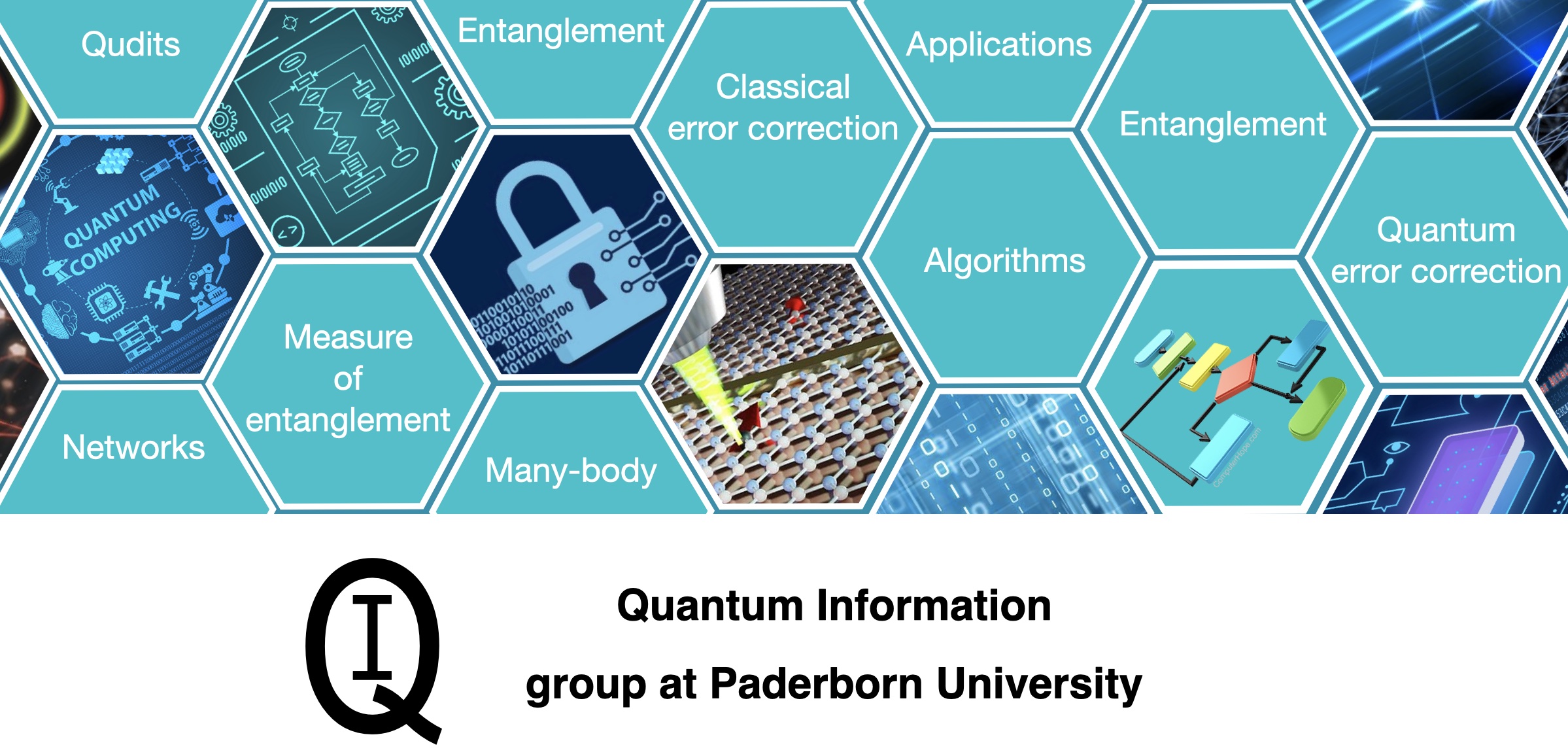



HomeRRRRResearchRRRRTeachingRRRR
Quantum Information
M
Contents of the course:
Over the last century, Quantum mechanics has had profound impacts on both fundamental science and technology. The emerging field of Quantum Information Theory studies a paradigm for information processing empowered by quantum mechanics. This field has demonstrated that quantum information processing can outperform its classical counterpart and is a revolutionary direction to investigate future information technologies. Quantum Information Science incorporates techniques from computer science, mathematics, and physics.
Of particular interest is quantum entanglement, which is the phenomenon that occurs when a group of particles is generated or interacts in a way such that the state of each particle cannot be described independently of the others, even when the particles are separated by arbitrarily large distances. Entanglement is a primary feature of quantum mechanics not present in classical physics and it is a resource behind most modern quantum technologies, such as quantum computers. This lecture introduces the advance concepts of quantum communication and information.
The contents include:
EEntanglement of two- and many-body systems
Quantum information processing and applications
Measures of Entanglement, Distance and Fidelity
Higher local dimensions (qubits vs qudits)
Quantum channels
EClassical and quantum error correcting codes and their differences
Learning outcomes and competences:
Students learn cutting-edge concepts at the intersection of computer science and quantum mechanics.
This lecture equips students with advanced, interdisciplinary technical proficiency, enabling
them to pursue careers in analysis intensive industries, technology start-ups, or research and
development roles in leading technology companies or academia. To achieve this, the students
get familiar with the basics of quantum mechanics and the related algebra. Furthermore, they will
be able to:
understand the underlying concepts of entangled systems (two-body and many-body),
understand the fundamental idea of maximally entangled systems, classify and characterise them for practical applications,
describe the basic notion of higher local dimension particles (qubits vs qudits),
apply the theory of classical and quantum error correcting codes, and study their differences,
to work on interdisciplinary topics and, in particular, to acquire the basics of different disciplines.
References;
*) Michael A. Nielsen, Isaac L. Chuang, Quantum Computation and Quantum Information,
Cambridge University Press, 2000.
*) F. J. MacWilliams and N. J. A. Sloane. The Theory of Error-Correcting Codes, North-Holland
Mathematical Library. North-Holland, Amesterdam, 1977. ISBN 9780444851932.
*) Ingemar Bengtsson and Karol Zyczkowski, Geometry of quantum states: an introduction to
quantum entanglement, Cambridge university press, 2006, ISBN 9780511535048.
The following poster provides more information:
